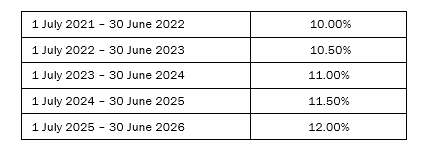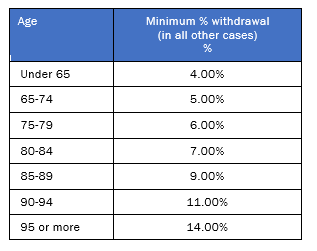2021/22 Federal Budget — Minimal Tax Changes in big spending Federal Budget

There were not many surprises in Josh Frydenberg's third Federal Budget handed down last night. The 24-hour news cycle ensured big spending announcements have been publicised.
With an eye on continuing the rapid but unexpected economic recovery, it is pleasing that there were no new tax increases announced and a maintenance of existing individual tax rates from 1 July 2021.
INDIVIDUAL CHANGES
Income Tax relief for individuals
As foreshadowed, the Morrison Government announced they will extend the Low- and Middle-Income Tax Offset (LMITO) for a further twelve months. This was previously scheduled to finish on 30 June 2021. It will extend to 30 June 2022.
No changes to the individual tax rates mean the tax-free threshold where an individual will pay no income tax remains at $21,900.
The Medicare levy low-income thresholds for singles, families, and seniors and pensioners from 1 July 2020 will increase to take account of recent movements in the CPI. The threshold for singles will be increased from $22,801 to $23,226.
Below are the resident Australian income tax tables from 1 July 2021:

a: Medicare is not payable where your taxable income is less than $23,226 (2020/21)
b: Low Income Tax Offset (LITO) of $700 available to taxpayers whose taxable income is less than $45,000
c: Low Middle Income Tax Offset (LMITO) of up to $1,080 is carried over from the 2020 tax year to taxpayers whose taxable income is between $48,000 and $90,000
d: Low Middle Income Tax Offset (LMITO) phases out at the rate of $0.03 per dollar between $90,000 and $126,000.
For clients receiving a fully franked dividend from their passive investment company the maximum cash dividend an individual shareholder could receive without triggering additional "top up" tax, is approximately $116,150.
Investment in Childcare
To help boost workforce participation, the Morrison Government will make an additional $1.7 billion investment in childcare as part of the 2021-22 Budget. The changes deliberately target low- and middle-income earners with around half the families set to benefit having a household income under $130,000.
Starting on 1 July 2022 the Government will:
For those families with more than one child in childcare, the level of subsidy received will increase by 30 percent to a maximum subsidy of 95 per cent of fees paid for their second and subsequent children.
Tax Residency Test Changes
With effect from the income year after the amending legislation receives Royal Assent (we expect this to be from 1 July 2022) the test for becoming an Australian resident will be:
a. Simple Bright Line Test -- a person who is physically present in Australian for 183 days or more in any income year will be deemed an Australian tax resident.
b. Individuals that do not meet the primary test will be subject to secondary tests that depend on a combination of physical presence and "measurable objective criteria".
If the amendments follow the Board of Taxation recommendations, there will be a one test for becoming an Australian resident and a different test for Ceasing to be an Australian Resident. Both tests will be a tick the box test.
Improved utilisation of SMSFs for Temporary/Overseas Residents
The Central Management and Control test that needs to be passed to maintain a SMSF has improved so that you can continue to utilise a SMSF if you are away from Australia for up to 5 years. The previous test was 2 years.
UPDATE ON KEY SUPERANNUATION STRUCTURAL MATTERS
Contribution limit increase from 1 July 2021
The tax-deductible contributions one can make increases to $27,500 per annum.
Non-concessional or after-tax contributions increase to $110,000 per annum or up to $330,000 every three years using the bring forward rule. Your superannuation balance as at 30 June of the prior year impacts whether you can use this bring forward Rule as follows:

Superannuation Guarantee
Despite speculation to the contrary, the compulsory Super Guarantee Contribution rate will increase to 10% as planned from 1 July 2021. The below table outlines the gradual increase to 12% over the next 5 years as follows:

Importantly it was announced last night that from 1 July 2022, paying employer contributions on a minimum income threshold of $450 a month for employees has been scrapped. That is there will no longer be a minimum monthly threshold for employers making superannuation contributions for employees.
Relaxation of Work Test for Superannuation Contributions
It was announced last night that the Work Test will no longer apply from 1 July 2022 for non-concessional contributions allowing self-funded retirees to boost their retirement savings for individuals aged between 67 and 74.
The Work Test was previously legislated to move from age 65 to 67, a reminder that the work test is met when you work at least 40 hours of gainful employment in 30 consecutive days.
Good news for Downsizer Contributions
From 1 July 2022 if you are aged 60 or over, you can contribute up to $300,000 (or $600,000 per couple) from the sale of proceeds of your principal place of residence that you have owned for at least 10 years even if your total superannuation balance is over $1.7m. The age that this contribution could have been made was previously over 65.
SUPERANNUATION PENSIONS
Minimum withdrawal requirements
Minimum pension requirements will lose the 50% reduction introduced as a response to COVID-19. From 1 July 2021 you will be required to take your full minimum pension. Please keep this in mind for cash flow planning. The percentage of the capital value on the previous 30 June funding your pension that needs to be withdrawn each year is as follows:

Transfer balance cap increase from 1 July 2021
The maximum capital value of assets you can apply to fund a concessionally taxed pension increases from $1.6m to $1.7m from 1 July 2021.This change only applies to new pensions.
CORPORATE TAX CHANGES
Reduction in Small Business Corporate tax rate
With effect from 1 July 2021 for a company that derives more than 20% of its income from carrying on an active business and has an annual turnover of less than $50 million, the company tax rate reduces to 25%.
For public companies and private companies that derive more than 80% of their income from passive investments the corporate tax rate remains at 30%.
Extending the Immediate tax write off for asset acquisitions to 30 June 2023
The current concession of immediately deducting depreciating assets (new and second hand) acquired after 6 October 2020 for companies with aggregated turnover of less than $5 Billion has been extended by 12 months.
To be deductible the asset can now be installed ready for use by 30 June 2023 (previously 30 June 2022).
Temporary Loss Carry-Back Extension by 12 months
Companies with aggregated turnover of less than $5 Billion are now able to carry back losses incurred up to the 2022-23 income year (previously 2021-22) to offset previously tax profit as far back as the 2018-19 income year.
Self-assess and depreciate the effective life of patents, designs, copyrights, and software.
Currently, the Tax Act prescribes a fixed term effective life for depreciating intangible assets such as patents, copyrights, designs and in house software.
From 1 July 2023, businesses will be able to self-assess the intangible asset effective life and write them off at a self-assessed faster or slower rate.
Employee Share Scheme Changes
For those businesses currently contemplating an employee share or equity plan, there is no material tax change to the way that plan will be designed.
The headline change is that ceasing to be employed does not trigger a taxing point on employee shares and options that are eligible for deferred tax treatment. The change mainly benefits option plans as it is less common for employees that receive shares to be eligible for the tax deferrals.
The change does not impact employees that are tax up front on the issue of shares or options.
The change takes effect in the first income year after the amendments have received Royal Assent. We expect this measure will commence on 1 July 2022.

